The nation’s first domestically developed satellite, Formosat-5, has taken images at the resolution it was designed to deliver, but only “when weather conditions are good,” Ministry of Science and Technology (MOST) officials said yesterday, adding it has completed its mission of capturing satellite images of Taiwan.
The satellite was launched from Vandenberg Air Force Base in California on Aug. 25 last year, but the first images it transmitted back in September last year were fuzzy and marred by light spots.
Since then, the National Space Organization (NSPO) has been working to improve its image quality using image processing software and by adjusting the satellite’s altitude, angle and the temperature of its imaging device.
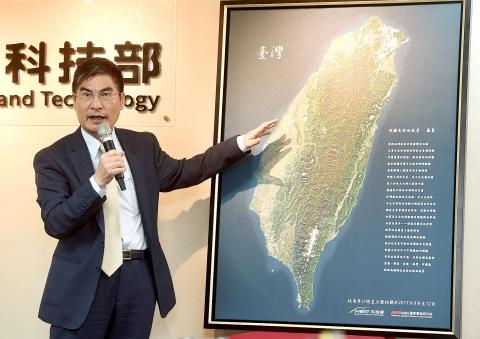
Photo: Chien Jung-fong, Taipei Times
At a news conference in Taipei yesterday, project director Chang Ho-pen (張和本) said the satellite has achieved the resolution it was designed to produce — 2m for black-and-white images and 4m for color images — when the weather permits.
“For example, the satellite images taken from above China and from above California can be very different when the former has serious air pollution,” Chang said.
Yet, the NSPO has not quantified what weather conditions would allow the satellite to transmit images at its default resolution, he added.
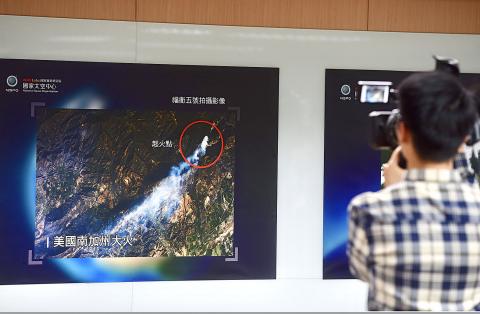
Photo: Chien Jung-fong, Taipei Times
The satellite’s images have already proven sufficient in supporting the nation’s disaster prevention missions, and would be available on the organization’s Web site from September, he said, adding that the US, Japan, Russia and Australia have expressed an interest in purchasing the images.
Asked if Formosat-5’s performance has achieved the ministry’s objectives, Chang said “yes,” while Minister of Science and Technology Chen Liang-gee (陳良基) gave a more reserved response.
The imaging capabilities of Formosate-5 have surpassed those of Formosat-2, which has a 2m resolution for monochromatic images and 8m for colored ones, Chen said.
However, when compared with the US Army’s stricter requirements, it only achieves a 3m resolution for black-and-white images and 5m for colored ones, he said.
As the NSPO is planning to launch one satellite per year in the following 10 years, it will pay more attention to the mechanical adjustment and microwave sensing capabilities of satellites, Chen said.
Meanwhile, Formosat-5, which passes over the same spot on Earth every two days, has finished taking remote images of Taiwan during its orbits between September and December last year, he said.
The ministry presented a complete satellite image of Taiwan to President Tsai Ing-wen (蔡英文) yesterday, with Tsai promising to support its space programs, Chen added.
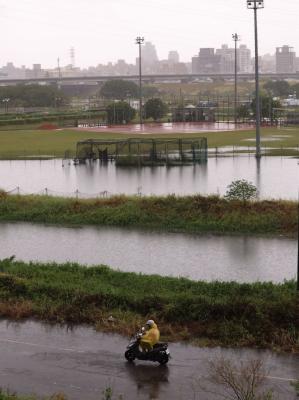
Taipei, New Taipei City, Keelung and Taoyuan would issue a decision at 8pm on whether to cancel work and school tomorrow due to forecasted heavy rain, Keelung Mayor Hsieh Kuo-liang (謝國樑) said today. Hsieh told reporters that absent some pressing reason, the four northern cities would announce the decision jointly at 8pm. Keelung is expected to receive between 300mm and 490mm of rain in the period from 2pm today through 2pm tomorrow, Central Weather Administration data showed. Keelung City Government regulations stipulate that school and work can be canceled if rain totals in mountainous or low-elevation areas are forecast to exceed 350mm in

EVA Airways president Sun Chia-ming (孫嘉明) and other senior executives yesterday bowed in apology over the death of a flight attendant, saying the company has begun improving its health-reporting, review and work coordination mechanisms. “We promise to handle this matter with the utmost responsibility to ensure safer and healthier working conditions for all EVA Air employees,” Sun said. The flight attendant, a woman surnamed Sun (孫), died on Friday last week of undisclosed causes shortly after returning from a work assignment in Milan, Italy, the airline said. Chinese-language media reported that the woman fell ill working on a Taipei-to-Milan flight on Sept. 22
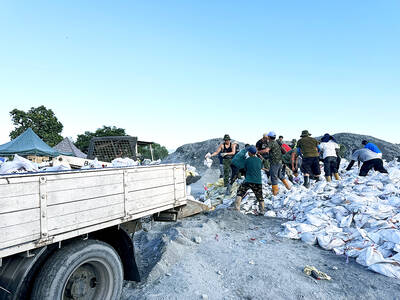
The Central Emergency Operations Center (CEOC) has made a three-phased compulsory evacuation plan for Hualien County’s Mataian River (馬太鞍溪) disaster zone ahead of the potential formation of a typhoon. The plan includes mandatory vertical evacuation using air-raid-style alarms if needed, CEOC chief coordinator Chi Lien-cheng (季連成) told a news conference in the county yesterday. Volunteers would be prohibited from entering the disaster area starting tomorrow, the retired general said. The first phase would be relocating vulnerable residents, including elderly people, disabled people, pregnant women and dialysis patients, in shelters and hospitals, he said. The second phase would be mandatory evacuation of residents living in
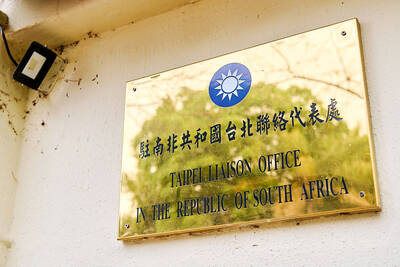
COUNTERMEASURE: Taiwan was to implement controls for 47 tech products bound for South Africa after the latter downgraded and renamed Taipei’s ‘de facto’ offices The Ministry of Foreign Affairs is still reviewing a new agreement proposed by the South African government last month to regulate the status of reciprocal representative offices, Minister of Foreign Affairs Lin Chia-lung (林佳龍) said yesterday. Asked about the latest developments in a year-long controversy over Taiwan’s de facto representative office in South Africa, Lin during a legislative session said that the ministry was consulting with legal experts on the proposed new agreement. While the new proposal offers Taiwan greater flexibility, the ministry does not find it acceptable, Lin said without elaborating. The ministry is still open to resuming retaliatory measures against South